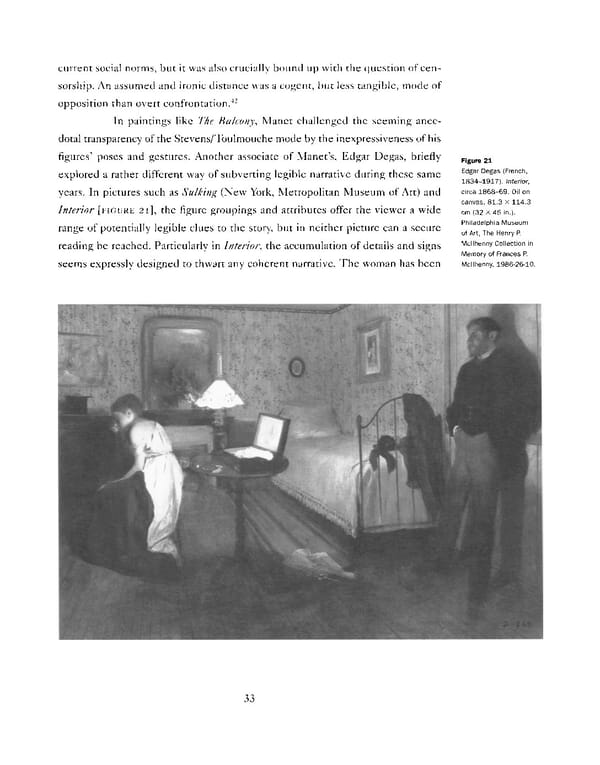current social norms, but it was also crucially bound up with the question of cen- sorship. An assumed and ironic distance was a cogent, but less tangible, mode of opposition than overt confrontation.42 In paintings like The Balcony, Manet challenged the seeming anec- dotal transparency of the Stevens/Toulmouche mode by the inexpressiveness of his figures' poses and gestures. Another associate of Manet's, Edgar Degas, briefly Figure 21 explored a rather different way of subverting legible narrative during these same Edgar Degas (French, 1834-1917). Interior, years. In pictures such as Sulking (New York, Metropolitan Museum of Art) and circa 1868-69. Oil on Interior [FIGURE 21], the figure groupings and attributes offer the viewer a wide canvas, 81.3 x 114.3 cm (32 x 45 in.). range of potentially legible clues to the story, but in neither picture can a secure Philadelphia Museum of Art, The Henry P. reading be reached. Particularly in Interior, the accumulation of details and signs Mcllhenny Collection in Memory of Frances P. seems expressly designed to thwart any coherent narrative. The woman has been Mcllhenny, 1986-26-10. 33
 Pierre-Auguste Renoir: La Promenade Page 40 Page 42
Pierre-Auguste Renoir: La Promenade Page 40 Page 42